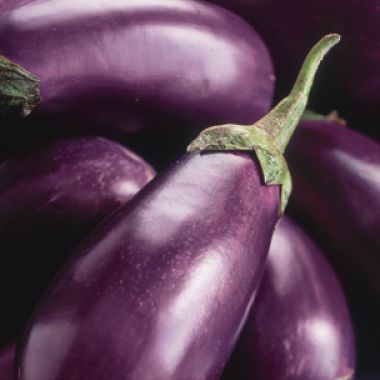All About Eggplant

Large globe eggplants are ideal for roasting, broiling and grilling, after which they excel in pureed spreads, pasta sauces and chilled antipasti. Longer, thinner Asian eggplants lend themselves well to stir-frying, braising in curry sauces and pickling.
Selecting
Eggplants are at their best and most abundant in late summer. Choose smooth, firm, glossy-skinned eggplant with green caps and stems. Whether purple, white, green or another color, avoid any that are wrinkled, torn, bruised or scarred or that have brown, dried caps.
Storing
Store eggplants in a plastic bag in the refrigerator for up to 5 days.
Preparing
Rinse the eggplants and then, using a large knife, trim the green top. If an eggplant is large with numerous seeds, or if the flesh looks dark and watery, extract the bitter juices by sprinkling salt on it after slicing and place in a colander set in the sink for 30 minutes. Salting also prepares eggplant for deep-frying. Young eggplants or Asian varieties can be cooked without salting or peeling.
Adapted from Williams-Sonoma Kitchen Companion: The A to Z Guide to Everyday Cooking, Equipment and Ingredients (Time-Life Books, 2000)